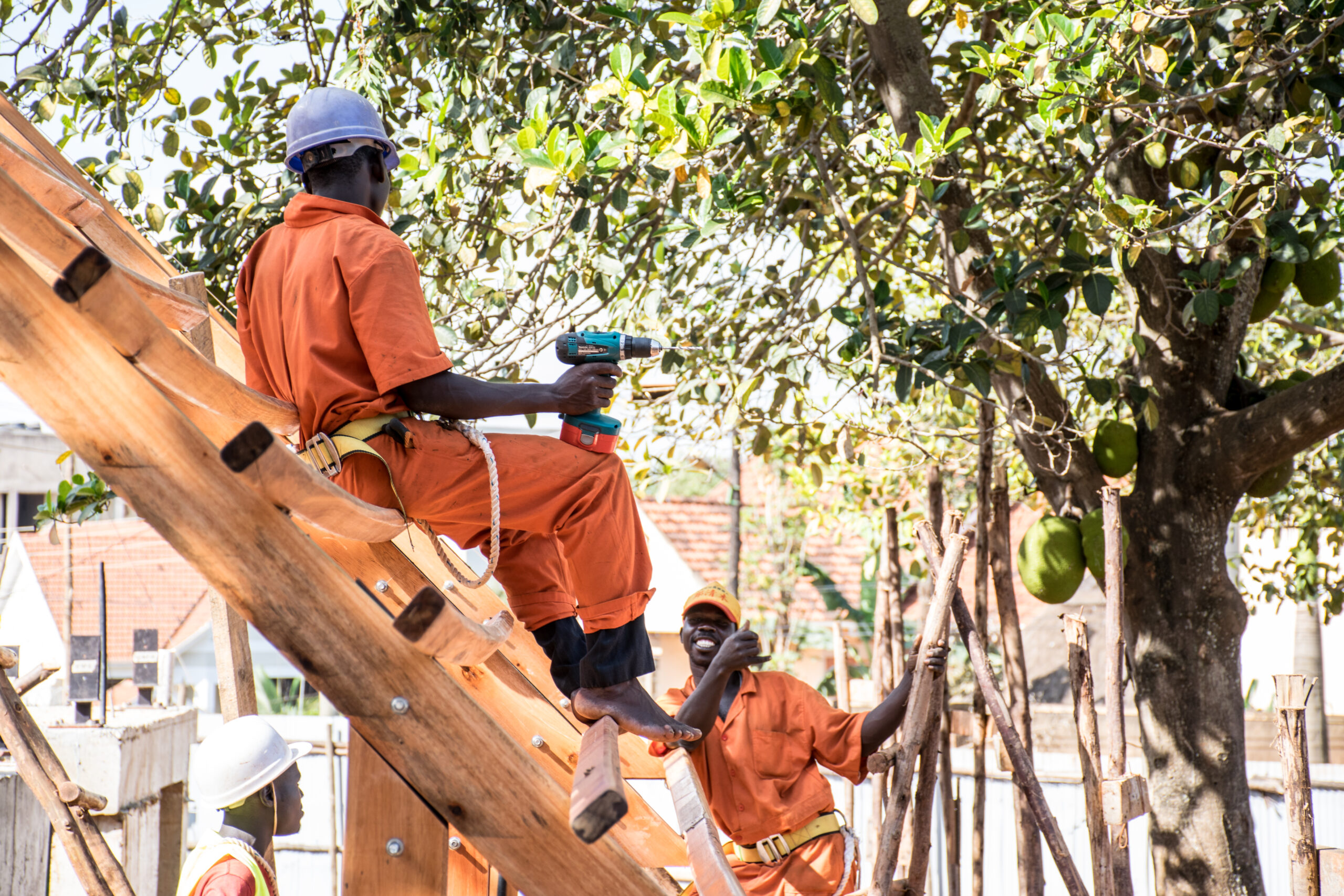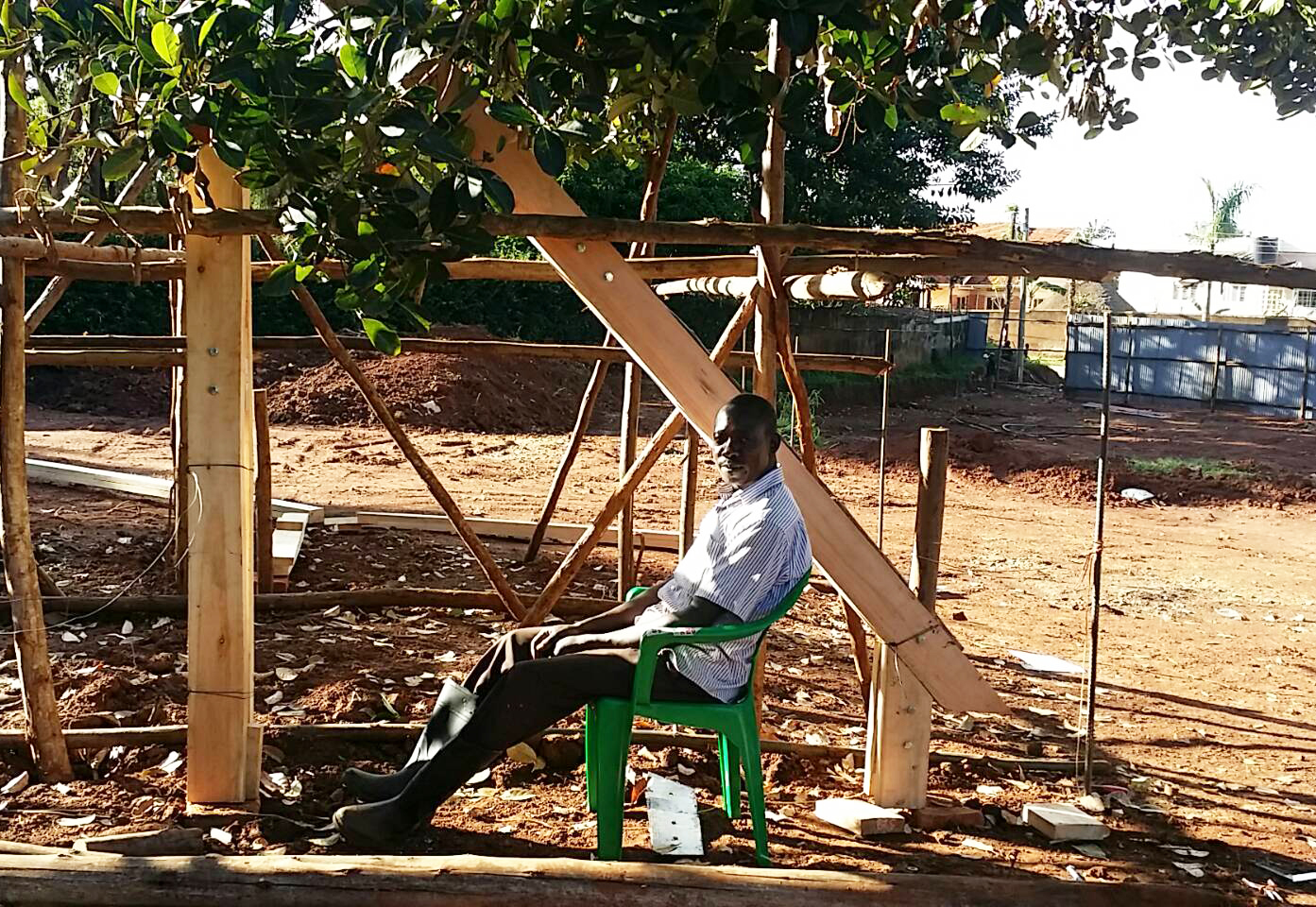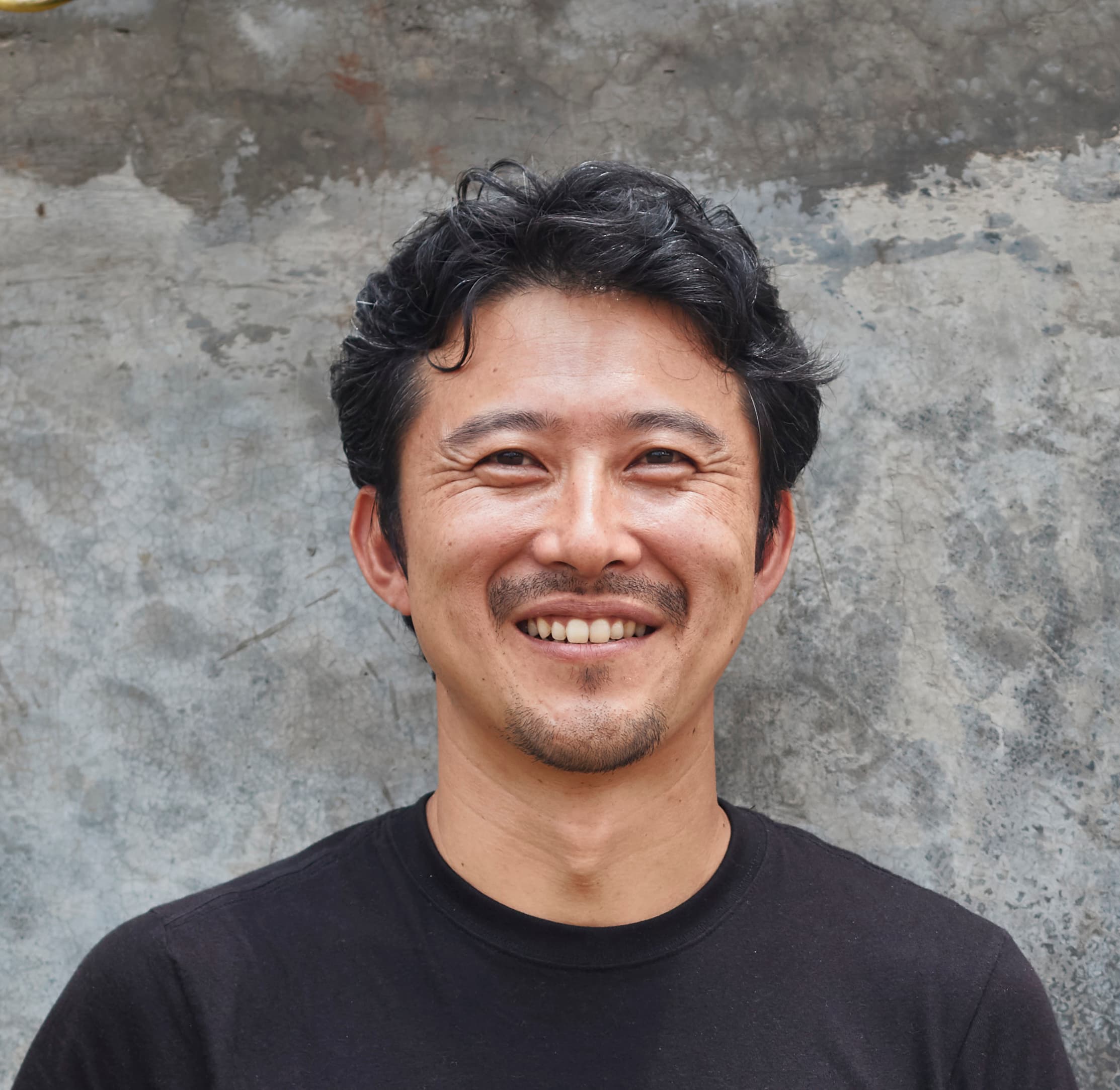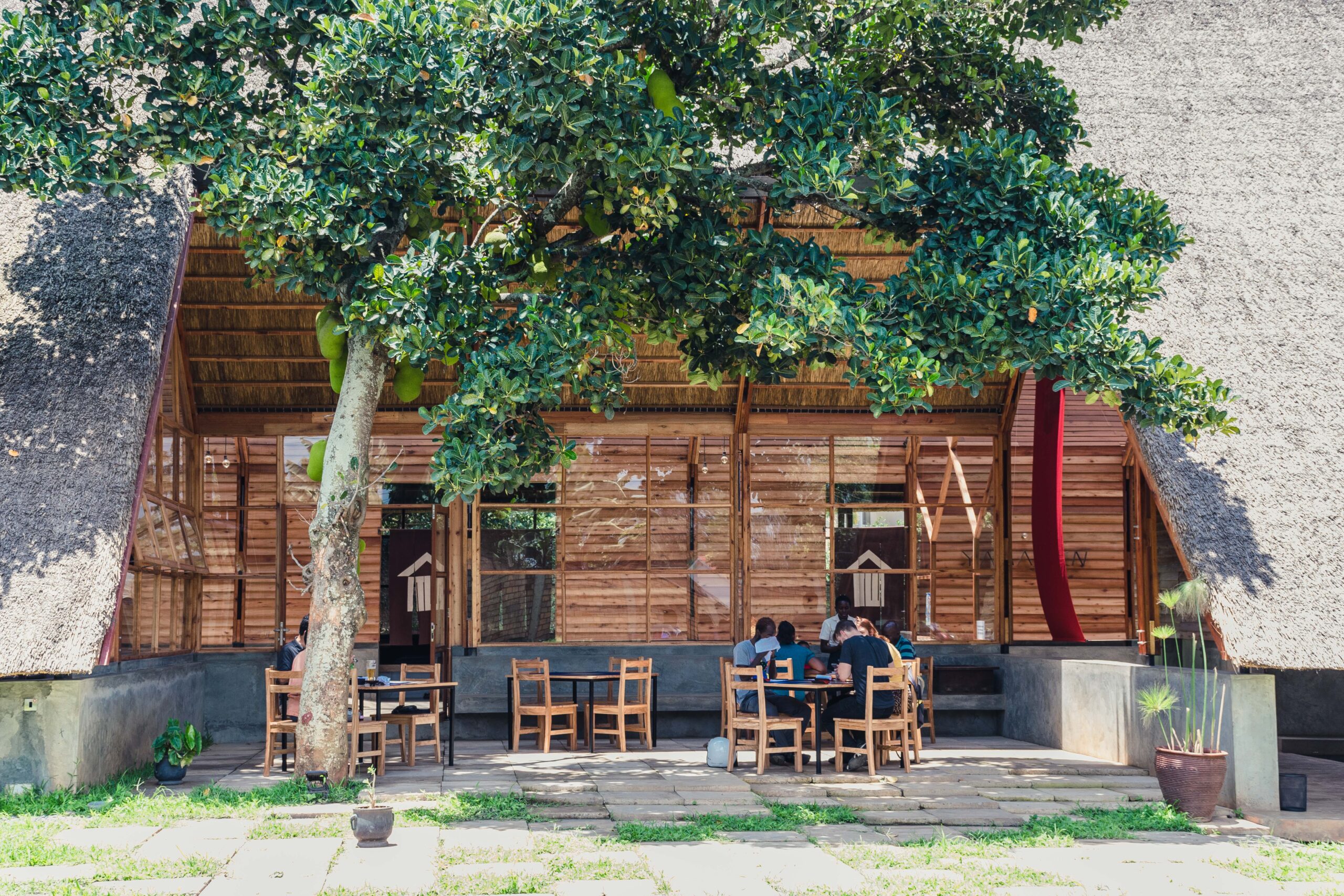Architecture made by people -Kenchikushi 8.2020
原文で表示 (日本語) Cover: A craftsman laying local fired bricks. Mortar joints are prepared using 12mm rebar.
Photo:Timothy Latim
The shortage of labour and craftsmen in Japan has been for a long time. Builders has been aging; and foreign workers can be seen on many sites in the city. The division of labour and the mechanisation of various processes are advanced. There is in the air a sense of “righteousness” about building with as few people and hours as possible.
In contrast, in Uganda, whose population is exploding with an oveflowing of young workers, the assumption is that everything must be done by hand. Even if it takes ten men ten days, the cost of renting heavy machinery, petrol and drivers is much higher than the cost of manual labour. In carpentry and other processes, the use of machinery as well as heavy machinery alone increases the cost. On the contrary, there are often unbelievable incidents where heavy machinery is arranged for efficiency, but the operator’s skill in handling it is so poor that it destroys the installed parts and surrounding walls in a blink of an eye.
 Carpentry work at Yamasen Japanese Restaurant.
Carpentry work at Yamasen Japanese Restaurant.
On the other hand, the method of installing a little by little by hand is a daily repetition of trial and error process, but it is often the “right” and efficent method to go about. Also, being far remote from division of labour and mechanization, craftsmen are more willing to try and do everything by themselves; and we are able to try and create anything we want.
Moses, a migrant carpenter from the countryside in the north, was a carpenter with that kind of spirit. If you ask him to do something, he will do it. We were grateful to him for the time and effort he put into his work. He met us as a cabinetmaker and we had always relied on him for his willingness to make minor alterations to our furniture. Just that he is a bit loose with time and loves drinking that we suddenly lose touch with him.
In a society where everything is expected to be done on time and on schedule, it’s easy to become frustrated by the lack of progress and the repeated trial and error, dismissing the process as a waste of time. However, there are many things that can be seen and realised through the slow and repeated fine-tuning and improvement of a building. With so few skilled craftsmen on site, it is not uncommon to see their skills improve during the construction process as they carry out small tasks repeatedly. Time also allows us to discover the characteristics of the materials and the areas that are not working properly, which can often be improved during the construction process.
Trial and error leave scratches and blemishes. Upon completion, the building will not be in a pristine condition, but will have the handiwork of its craftsmen. It may not even completed on schedule, so people may start using the building while it is still unfinished, which of course causes problems. However, this unpredictable architecture reminds us beyond the various ‘rightnesses’ that the completion of the project is neither the beginning nor the end, but a process.
The aforementioned Moses may have found another good job, or he may be drowning in alcohol. Maybe he will work with us again, or maybe not. Nothing is certain.
 Carpenter Moses making a mock-up and checking the height of the ceiling.
Carpenter Moses making a mock-up and checking the height of the ceiling.
Photo : Ikko Kobayashi, Timothy Latim
Source : “Kenchikushi” Aug 2020




